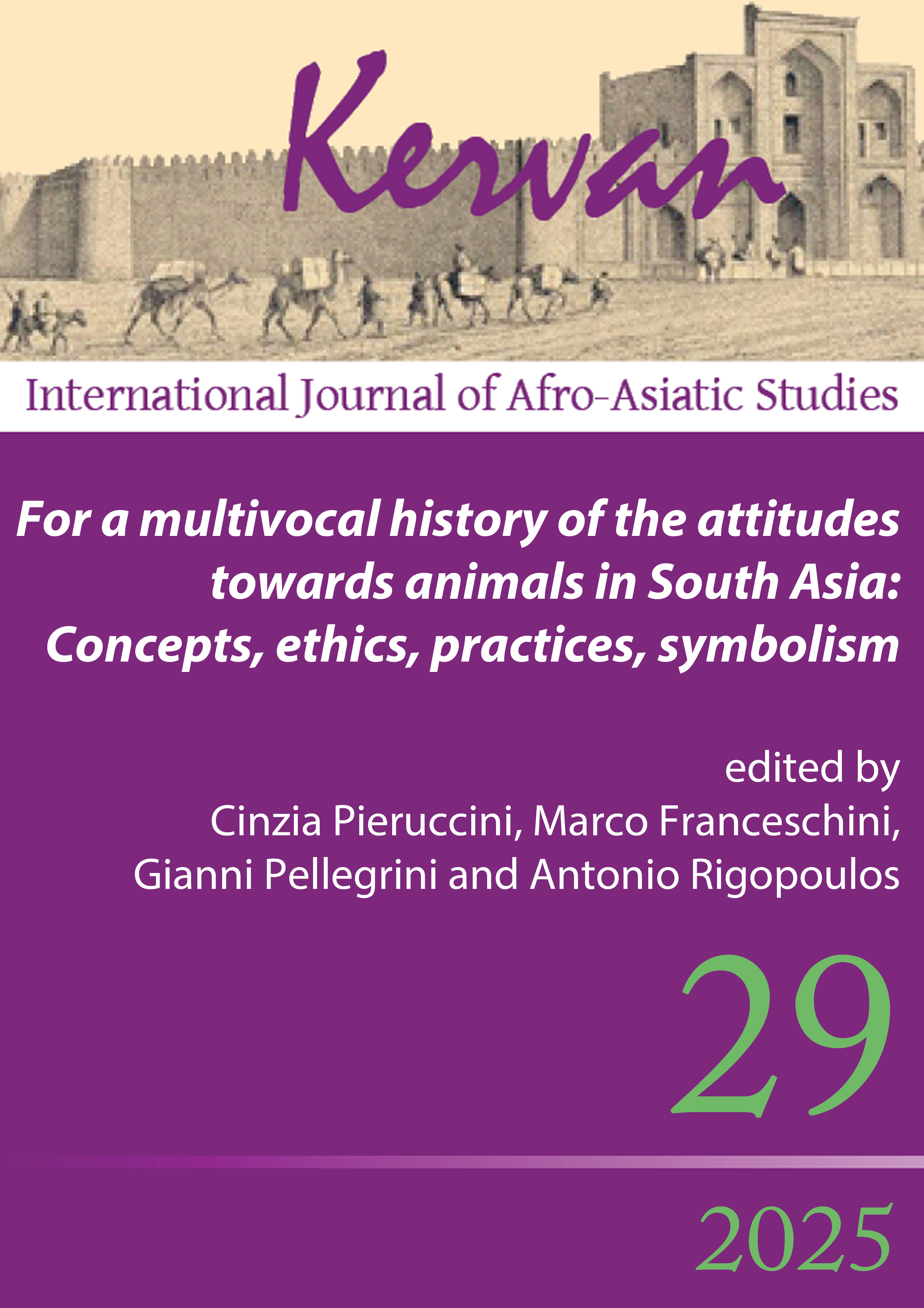Animal-oriented laukikanyāyas: On some uses of analogical maxims concerning animals in selected Vedāntic contexts
DOI:
https://doi.org/10.13135/1825-263X/12190Abstract
This contribution analyses some common uses of illustrations and analogical maxims related to the animal kingdom in general and some animals in particular. Indeed, Sanskrit philosophical texts occasionally resort to everyday life scenarios that are readily accessible to human experience in order to clarify sophisticated theories, doctrines or complex theoretical disquisitions. The maxims that portray specific natural and cultural situations and analogise them with specific theoretical contexts are called laukikanyāyas. These laukikanyāyas, which are usually built upon the observation of nature, are frequently modelled after animals, taking into account certain physical or behavioural traits that may be either tangible or cultural. A well-known example found in the Adhyāsabhāṣya (Śaṅkara Bhagavatpāda’s introduction to his Brahmasūtrabhāṣya) will serve as a methodological starting point for the analysis.
Downloads
Downloads
Published
Issue
Section
License
Gli autori che pubblicano su Kervan accettano le seguenti condizioni:
- Gli autori mantengono i diritti sulla loro opera e cedono alla rivista il diritto di prima pubblicazione dell'opera, contemporaneamente licenziata sotto una Licenza Creative Commons - Attribuzione che permette ad altri di condividere l'opera indicando la paternità intellettuale e la prima pubblicazione su questa rivista.
- Gli autori possono aderire ad altri accordi di licenza non esclusiva per la distribuzione della versione dell'opera pubblicata (es. depositarla in un archivio istituzionale o pubblicarla in una monografia), a patto di indicare che la prima pubblicazione è avvenuta su questa rivista.


 The articles that have appeared on Kervan since 2016 are rated as Class A in the system of National Scientific Qualification (ASN, disciplines 10/N1 and 10/N3).
The articles that have appeared on Kervan since 2016 are rated as Class A in the system of National Scientific Qualification (ASN, disciplines 10/N1 and 10/N3). The journal has been approved for inclusion in DOAJ. The DOAJ listing of the journal is available at
The journal has been approved for inclusion in DOAJ. The DOAJ listing of the journal is available at  The journal has been approved for inclusion in ERIH PLUS. The ERIH PLUS listing of the journal is available at
The journal has been approved for inclusion in ERIH PLUS. The ERIH PLUS listing of the journal is available at  Kervan was just accepted for indexing in SCOPUS. This important milestone ensures that articles published in Kervan are easily found when searching for library, archives and Information science and it enables Kervan authors to keep track of how often their article has been cited by others.
Kervan was just accepted for indexing in SCOPUS. This important milestone ensures that articles published in Kervan are easily found when searching for library, archives and Information science and it enables Kervan authors to keep track of how often their article has been cited by others.
